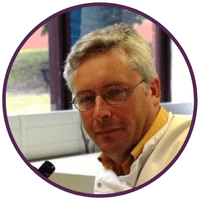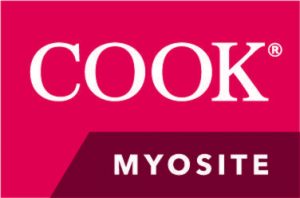Cell and gene therapy regulation: ask the experts

In this ‘Ask the experts’ feature, we have brought together a panel of experts to share their thoughts on the importance, challenges and future of the regulatory field for cell and gene therapies. For example, at what stage should you address regulation when launching new products to market? Are there lessons to be learnt from other industries? Could digitizing data help streamline the regulatory process for manufacturers? Discover more on this topic from our panel, featuring Ron Jankowski (Cook Myosite; PA, USA), Steve Oh (A*STAR; Innovis, Singapore) and Glyn Stacey (SSCBio; Hertfordshire, UK).
-
- Meet the Experts
- Why is regulation in cell and gene therapy so important?
- What do you think is the main challenge in moving cell and gene therapy regulation forward?
- How has COVID-19 impacted regulation of new therapies?
- At what stage must researchers, developers and manufacturers address regulation when creating a new market product?
- How can manufacturers incorporate AI and tech solutions in streamlining processes to meet regulatory requirements, for example in digitizing data?
- What lessons can the cell and gene therapy industry learn from the biotech industry, in working efficiently alongside evolving technologies to satisfy necessary regulatory requirements?
- What are the benefits of increased regulation in future therapies?
Meet the Experts

Ron Jankowski
Vice President of Scientific Affairs
Cook Myosite
Ron Jankowski has been with Cook MyoSite since its founding and has extensive experience in translational medical and biologic product development. He earned doctoral degree in bioengineering from the University of Pittsburgh (PA, USA) and has authored and coauthored numerous peer-reviewed manuscripts, reviews, book chapters, and abstracts involving a wide variety of cellular-based applications. He leads the development programs for current products, investigates new indications for existing products, and evaluates the formation of strategic research partnerships to expand the Cook MyoSite product pipeline with a focus on translational research.

Steve Oh
Director Stem Cell Bioprocessing & Institute Scientist
Bioprocessing Technology Institute, A*STAR
Steve Oh is an Institute Professor and Director of Stem Cell Bioprocessing at the Bioprocessing Technology Institute under the umbrella of the Agency for Science Technology and Research (A*STAR) in Singapore. He has been in the biotech space for over 30 years, 22 of those in stem cell bioprocessing R&D engaging with companies to develop better bioprocesses. Together with Jon Loh, he runs the Allogeneic Stem Cell Manufacturing (ASTEM) program, a multi-million dollar government investment to grow the cell therapy industry in Singapore.

Glyn Stacey (PhD, Prof.)
Director, International Stem Cell Banking Initiative (UK)
CEO, SSCBio Ltd (UK)
President’s International Fellowship Initiative, Institute of Zoology (Beijing, China)
Glyn Stacey is Director for the International Stem Cell Banking Initiative based in the UK and, together with the ISCBI Board and Steering Group, organizes regular international meetings which bring together experts in the field of pluripotent stem cells to discuss best practice in their use for basic research, cell therapy development and other applications. Glyn also holds a position as a President’s International Fellowship Investigator with the Institute of Zoology at the Chinese Academy of Sciences (IOZ-CAS; Beijing, China); in this role, he advises the National Stem Cell Resource Center and the Institute for Stem Cells and Regeneration in their work on development of cell therapies based on pluripotent stem cells. Glyn is also the CEO of the biosciences consultancy SSCBio Ltd (UK), which provides advice and support internationally to a broad range of government institutes and private not-for-profit organizations.
Why is regulation in cell and gene therapy so important?
Ron Jankowski (RJ): The common goal of cell and gene therapy (CGT) researchers, clinicians, industry and regulators is to translate these therapies into safe and effective options to improve patients’ lives. However, this must be done with the proper oversight and balance to ensure that this is accomplished in a practical, ethical and scientific, clinical evidence-based, manner.
Steve Oh (SO): Safety and efficacy of biological therapies are paramount and need to be at the forefront of our planning as we develop therapies. As we introduce more and more sophistication into engineering cells and genes into the body, there are so many unknown unknowns that we cannot anticipate in a sick person’s body so, performing the staged clinical trials for cell and gene therapies are important before providing them as regular therapies to hundreds and thousands of patients.
Glyn Stacey (GS): Broadly, cell and gene therapies are considered to be drugs and given their novel nature they are also currently considered to be nominally higher risk. As these products become better understood and regulators have greater experience with them, this higher risk perspective will hopefully change.
What do you think is the main challenge in moving cell and gene therapy regulation forward?
RJ: We need globally-consistent regulatory policies that complement the efficient development and introduction of CGT products without compromising or undermining the need for sufficient clinical evidence. There is often a challenging balancing act between the amount and quality of evidence needed for market approval and the potential for additional delay of promising treatments, particularly for seriously and terminally ill patients.
SO: There are many challenges in both safety and efficacy. It really depends on the therapy. For cell-based therapy, the injected cell population must function at the site for its intended purpose. However, it could under some circumstances change into a different cell state that could either be non-functional or, worse still, dysfunctional or malignant. The function could also diminish over the lifetime of the patient. For gene therapy, the introduced gene could land at another site on the chromosome and be ineffective, or could activate or inactivate another gene or genes unexpectedly. This means that close monitoring and measuring of a therapy has to be treatment-specific. We are so fortunate that the breakthrough CAR-T cell therapies have been generally efficacious and safe, and hope and pray for continuation in this field.
GS: Understanding the impacts of new in vitro manufacturing processes on the product and obtaining more valuable critical quality attributes that can be measured reliably and quantitatively.
How has COVID-19 impacted regulation of new therapies?
RJ: There were numerous challenges encountered in trying to conduct clinical trials which rely heavily on patient on-site visits due to issues such as site closures and travel limitations. Going forward, with or without an ongoing public health emergency, this has led to renewed discussions on the use of new or modified off-site monitoring approaches in the conduct of patient safety and efficacy assessments. Central to this is effective implementation of such strategies while maintaining the integrity and safety of the trial.
SO: I think a new disease like COVID-19 has shown how many different ways this virus can sicken the population besides the acute phase of infection. Post-recovery, there are stories of chronic manifestation of tiredness, malaise, diabetes and circulation problems, amongst others. Therefore, we have to be quite agile in responding to adopting new regulations and yet be careful not to delay treatment of very sick patients who have no alternatives. Countries such as Japan has taken a very proactive approach whereby once Phase II trials have demonstrated efficacy, the therapy can be offered to patients, but companies have to continue to provide safety data for Phase III and later trials. I think initiatives such as this can be very beneficial and forward-looking.
GS: It has helped to identify potential methods of accelerating the acceptance of critical and carefully developed new medicines.
At what stage must researchers, developers and manufacturers address regulation when creating a new market product?
RJ: The answer to this question applies equally to the question of when to begin saving for retirement: as early as possible.
SO: Researchers should try to keep abreast of new regulations in C> and start to talk to regulators when they are planning to do animal models of a disease. At that stage, we will be given some pointers on what safety studies, such as dose levels to check toxicities or tumor formation in animals, might have to be done in a particular regulatory region. As the therapy moves into Phase I studies, more human specific safety requirements may be needed.
I started talking to the Singapore Health Science Authority about the use of off-the-shelf red blood cells (RBCs) made from induced pluripotent stem cells when we made the first break-through in making RBC in a bioreactor. They advised me on some safety and efficacy studies. Large animal models suggested were not feasible due to the limited number of RBCs that could be generated so it was moderated to mouse models. Such discussions were educational for both parties.
GS: The key demands of regulation should be considered at the outset of product development to assure the most appropriate product pathway is selected.
How can manufacturers incorporate AI and tech solutions in streamlining processes to meet regulatory requirements, for example in digitizing data?
RJ: The regulatory agencies have been encouraging the innovative use of process and analytical technology as a mechanism to design, analyze and control pharmaceutical manufacturing processes through the measurement of critical process parameters which affect critical quality attributes. Advances in engineering technology has afforded more capabilities to analyze complex manufacturing processes in-line and in real time. This is due to smaller and more reliable sensors, increased communication and data exchange between networked devices, as well as increased computing power to capture and analyze an immense amount of data and metadata. In combination with a mechanistic understanding of the process, AI enables manufacturers to exceed regulatory requirements by taking this information and building better predictive process models, which enhances the ability to monitor and respond to process disturbances and proactively build quality into the process.
SO: With the advent of AI solutions and fancy algorithms, I think if you can get a colleague who can use the collected data, code it and develop algorithms to interrogate it, we can come up with insights on how to better structure a clinical trial based on earlier animal models. For example, we developed a machine learning model which predicted efficacy of mesenchymal stromal cells for treating cartilage defects. This type of approach will be valuable in handling increasing complex and vast amounts of data. It will also inform other studies addressing the same disease for different populations, if the data is provided as open source. However, finding AI experts interested in biology is quite challenging!
GS: AI can clearly enhance the efficiency of the manufacturing and distribution process. Also, collation and analysis of analytical data can be operated in a far more valuable way to identify relevant signals of safety and quality. However, attention needs to be applied to standards to assure international applicability where feasible.
What lessons can the cell and gene therapy industry learn from the biotech industry, in working efficiently alongside evolving technologies to satisfy necessary regulatory requirements?
RJ: I think the key is the ability to recognize and react to different challenges within the scope of an evolving technology or field. Stakeholder organizations, such as the Alliance for Regenerative Medicine and the International Society for Cellular Therapy to name a few, have developed over the years to support and promote dialogue and awareness of new and ongoing challenges in the field amongst developers and regulators. This will continue to make progress in an effective manner without undermining the necessary regulatory process.
SO: Personally, I try to keep abreast of not only developments in the biotech space, but in engineering and basic biology. There are new analytics technologies, purification methods, preservation and quality control that we can learn from other parallel industries. In particular, bioprocess dynamic control strategies can be adapted to better regulate the manufacturing of the target cell or gene for therapy which we will need to bring to our field.
GS:
- Value of thorough understanding of the mode of action of the medicine.
- Value of the three pillars of standardization of biological medicines: identity, potency and purity.
- Value of assays of biological function.
- Approaches to investigation of the potential impact of changes in the manufacturing process, such as change in raw materials.
- Development of critical quality attributes
What are the benefits of increased regulation in future therapies?
RJ: We’re not looking necessarily for increased regulation benefits but rather more effective, efficient and adapted, tailored regulation within the CGT field.
SO: It is not increasing regulations for C> per se. Rather I would like to see regulation which is more adaptable and agile to cope with increasingly complex therapies. I believe application of AI in regulations could also be an area that could benefit the field. As they accumulate data, regulators could apply AI analytics to better understand what parameters work, what needs monitoring and what could be superfluous. Maybe we should encourage this dialogue between Government regulators and AI developers and help to streamline regulations in this complex field. This would be a big help to the C> space.
GS: I am not sure that an objective to simply increase regulation would be successful in improving product efficacy and safety. Enhancing the knowledge of regulators about new medicines and developing ways of implementing current regulatory requirements in an informed and more sophisticated way could in fact streamline the regulatory process.
Disclaimers
The opinions expressed in this interview are those of the interviewees and do not necessarily reflect the views of RegMedNet or Future Science Group.
This feature was produced in association with Cook Myosite.
